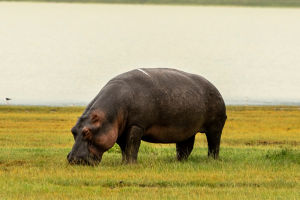Living in one of the planet's most extreme landscapes demands extraordinary qualities. For our Lykkers interested in incredible animal adaptations, the desert sand cat stands out as a fascinating example.
This small feline has evolved unique traits that enable it to thrive in vast sandy regions where most life struggles to survive.
Habitat and Geographic Range
Specialized Desert Dweller
The desert sand cat is a true inhabitant of sandy ecosystems, making its home exclusively in deserts and dune environments. It occupies three main regions around the world:
- The northern African deserts, especially areas in Algeria, Niger, and Morocco.
- The entire Arabian Peninsula, stretching across vast arid zones.
- Select parts of Central Asia.
Surviving Extreme Temperatures
This feline endures daily temperatures soaring above 50 °C and nighttime chills dropping to around –5 °C. Its body is finely tuned to cope with these dramatic fluctuations, especially its ears and paws, which perform critical survival functions.
Physical Adaptations
Exceptional Hearing
About the size of a typical house cat, this species possesses large, pointed ears equipped with highly developed auditory structures. These adaptations grant an extraordinary sense of hearing, allowing the cat to detect tiny movements beneath the sand at night.
This skill is essential for locating prey hidden underground.
Padded and Protected Paws
Unlike many other small felines, the desert sand cat's paws are covered in thick, long fur between the toes and on the soles. This fur acts as natural insulation against the scorching sand and helps prevent injury while moving across hot surfaces. An interesting side effect of this adaptation is that the cat's footprints are extremely hard to track, making scientific study challenging.
Diet and Survival Strategies
Water Conservation and Food Sources
In an environment where water is nearly nonexistent, this feline survives by extracting moisture directly from its prey. It mainly hunts small mammals like rodents but also targets hares, birds, lizards, and even venomous snakes.
Its opportunistic feeding behavior ensures it can make use of whatever is available in the harsh terrain.
Digging and Shelter
The desert sand cat is an adept digger, creating burrows or using those abandoned by other animals. These shelters provide refuge from the intense daytime heat, allowing the cat to rest comfortably until nightfall. While multiple cats may use the same shelter over time, they do not share it simultaneously.
Behavior and Conservation Status
Solitary but Wide-Ranging
Typically leading a solitary life, these cats roam across large territories. Interaction among individuals mainly occurs during the breeding period. Their elusive nature, combined with the challenging environment they inhabit, has made them difficult to study in detail.
Elusive and Mysterious
At night, these cats tend to close their eyes when humans approach, blending almost perfectly with the sandy surroundings. Their excellent camouflage and nocturnal habits make observing them in the wild a significant challenge for researchers.
Population Insights
Despite being considered rare, there is growing scientific suspicion that the true population and distribution might be larger than previously thought. Many individuals likely remain hidden in the vast deserts, evading detection.
Final Thoughts
The desert sand cat is a remarkable example of adaptation and resilience. Its specialized features allow it to survive in an environment where only the toughest thrive.
For our Lykkers fascinated by nature's wonders, this feline's story is a reminder of how life can flourish in the most unlikely places. Continued research and conservation efforts will hopefully reveal more about this secretive creature's habits and ensure its survival for generations to come.


